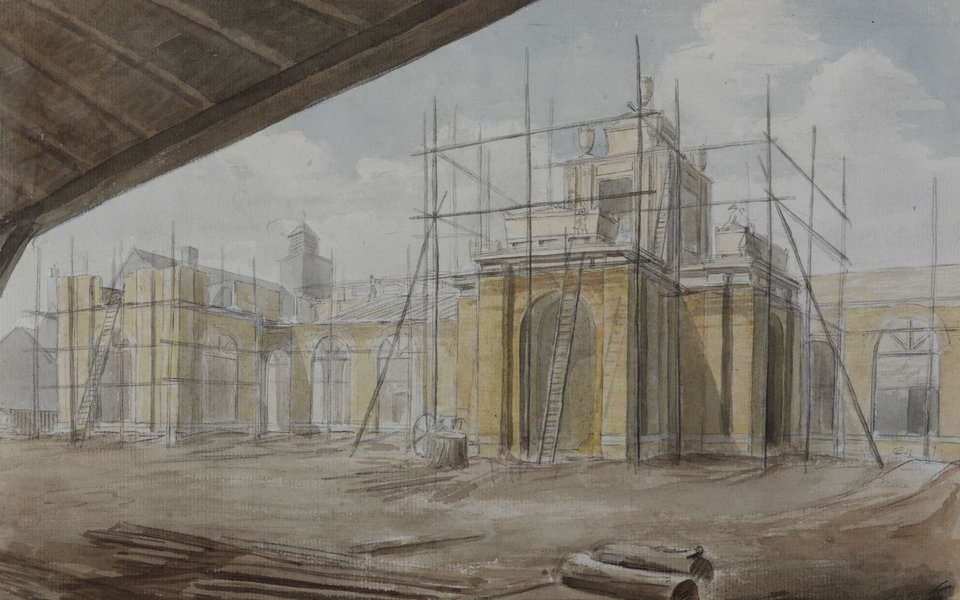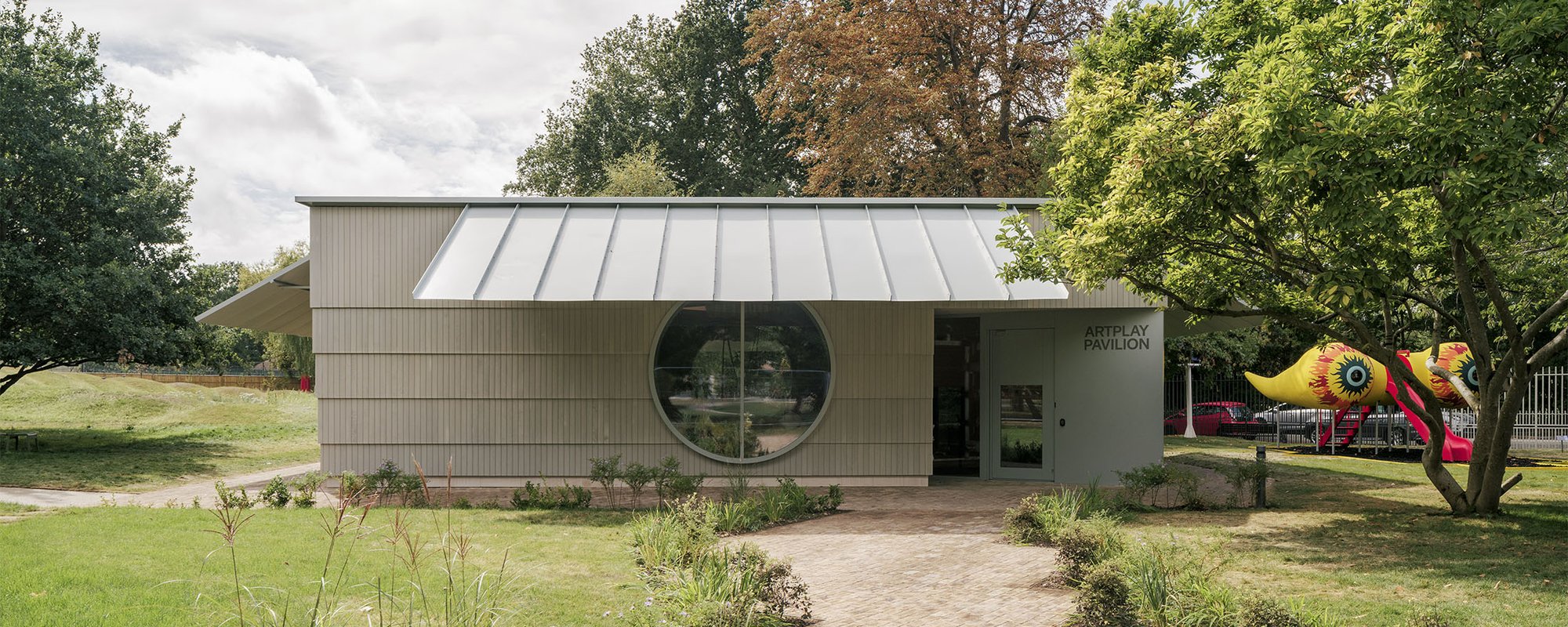Dulwich Picture Gallery is one of the best examples of gallery architecture in Britain.
It was designed and built by the leading architect John Soane (1753-1837) at the personal request of his friend, and one of Dulwich Picture Gallery’s founders, Francis Bourgeois (1753-1811), who had left a fund of £2,000 to establish a permanent home for the collection. In his design, Bourgeois also asked Soane to include a mausoleum for the Gallery’s founders, as well as almshouses.
The initial idea was to display the paintings in the west wing of nearby Dulwich College, but finding it in a state of disrepair on his first site visit, Soane proposed they construct a new building altogether. He submitted designs to the College, including perspective views in watercolour to show how the building would look in daylight and in its surrounding landscape. After numerous alterations, Soane’s plans were finally approved in July 1811. The foundations were laid on 19 October that year and the Gallery opened to the public six years later in 1817.
The authorities wanted the new gallery to be in keeping with the existing Jacobean architecture of the old college. While Soane’s initial designs incorporated some of these characteristics, he created a more classical building, with simplified forms. He estimated that this new building would cost in the region of £11,270, substantially more than Bourgeois had planned.
The deficit was met by the College, as well as by the only surviving founder of Dulwich Picture Gallery, Margaret Desenfans (née Morris, 1731-1813). Soane also did not charge for his services, and he constructed the gallery in low-cost London stock bricks, only using expensive Portland stone in the lantern, frieze and along the base of the building. His use of brick was met with criticism at the time as it was a material considered too humble for such an important structure, but it is a testimony to the economy of his design.

The pioneering roof-lanterns diffuse a natural top light that is ideal for viewing paintings, while also leaving as much space as possible for the hanging of pictures. The building has influenced the design of art galleries ever since.
The mausoleum is one of the Gallery’s quirkiest features, drenched in the atmospheric yellow light created by the amber-coloured glass which Soane used for the high windows in this space. The Gallery’s three founders are buried here. From the outside, it is shaped to recall a funeral monument, with urns atop the building, sarcophagi above the doors and sacrificial altars in the corners.
Inside, the Gallery originally consisted of only five rooms linked by a series of arches, creating an endless sense of space. The pioneering roof-lanterns diffuse a natural top light that is ideal for viewing paintings, while also leaving as much space as possible for the hanging of pictures. The building has influenced the design of art galleries ever since.
The Gallery has had a number of alterations since Soane’s day. In 1866 Charles Barry Jr (1823-1900) added a lobby to the Gallery’s south end (removed in 1953), and in 1884 the almshouses were converted into what are today our exhibition galleries. Further rooms were added in 1910 by the College’s architect Edwin Stanley Hall (1881-1940), but not completed until 1937 under the supervision of Harry Stuart Goodhart-Rendel (1887-1959). The building was severely bomb-damaged in 1944 during the Second World War but was rebuilt in replica by the architects Austin Vernon Associates under the guidance of Arthur Davies (1878-1951) and Edward Maufe (1882-1974). More recently in 2000, a further extension designed by Rick Mather (1937-2013) was added to provide essential education facilities as well as modern-day amenities.
In 2025, we transformed our gardens to create new opportunities for everyone to engage with art and nature. The project, known as Open Art, includes the new ArtPlay space (with a Family Café and Schools' Lunch Room), a free Sculpture Garden, the Lovington Sculpture Meadow, and environmental improvements across the site including a ground source heat pump. This was the biggest redevelopment we had undertaken in the past 20 years and has allowed us to maximise the Gallery’s unique potential - its building, art, gardens, people and location - for future generations.
Discover the ArtPlay Pavilion
A place for under 8s to discover art, through play
